Foster literacy skills with Social Studies Readers
A library of leveled readers helps scaffold reading and builds student literacy skills
Differentiate Learning for Elementary Students
Scaffold reading for all learning types with a customizable library of Social Studies Readers
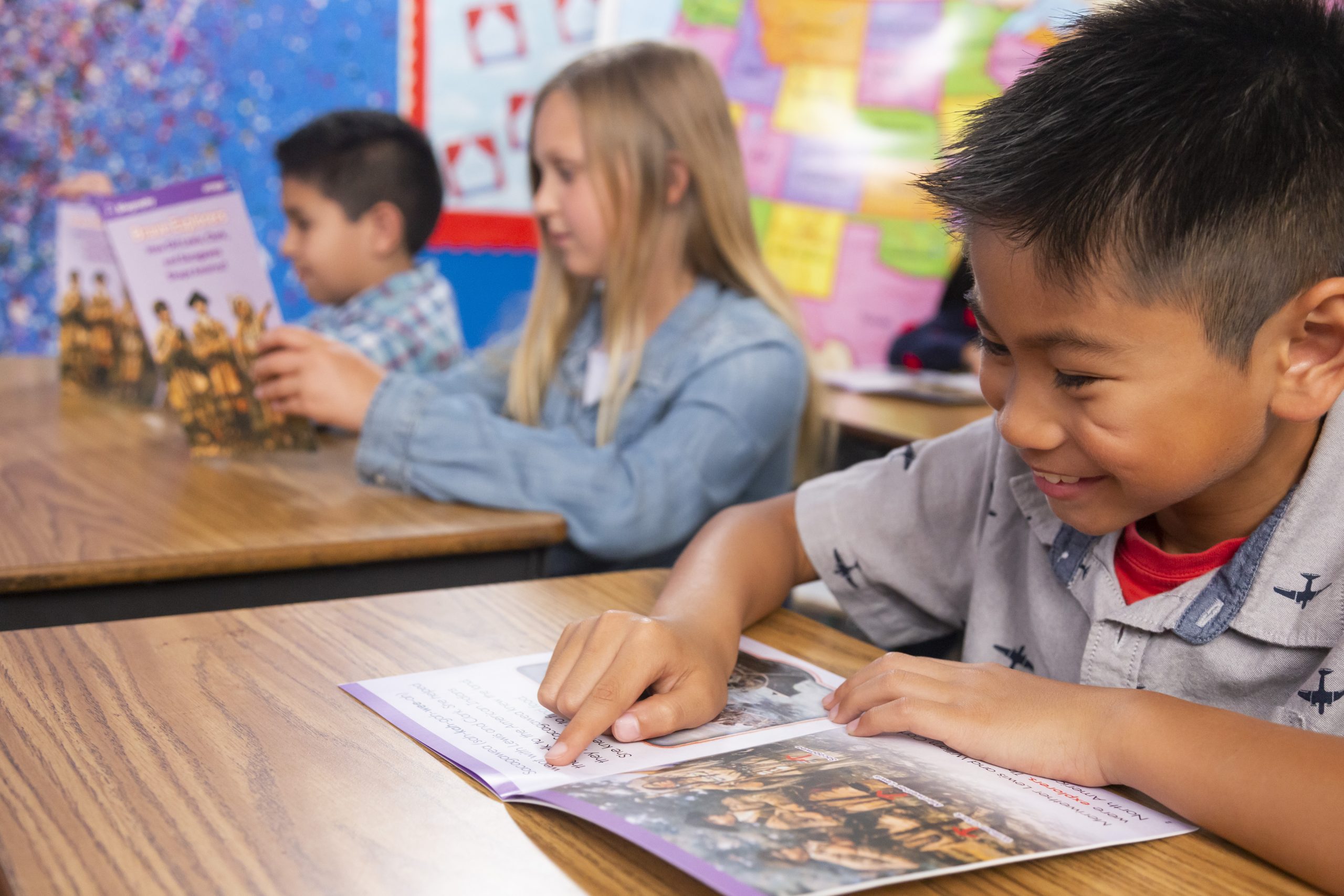
Nonfiction and Contemporary Readers
With the Nystrom library of Social Studies Readers, teachers are able to mix-and-match to create their own library. Each reader also includes primary sources from nonfiction photos and contemporary illustrations for students to analyze.

Foster Enthusiasm for Reading
The nonfiction and contemporary collection of readers will help guide your students to improve student literacy and social studies skills. Ranging from Level 0 through Level III in most grade levels, they give all students the opportunity to foster reading skills.

Modify Your Library to Fit Classroom Needs
Every library is flexible and customizable — teachers can use the readers for individual or group learning.

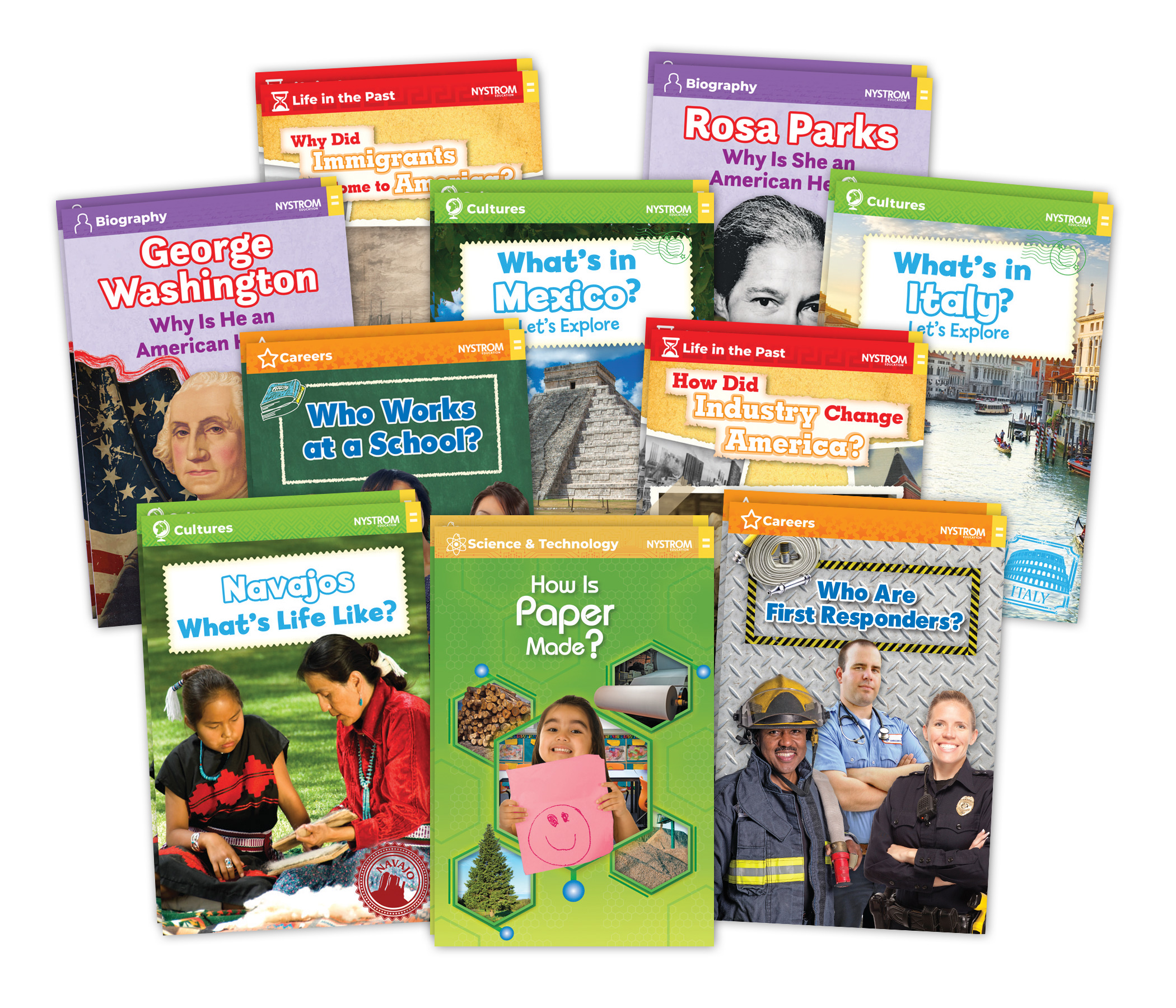
Kindergarten
- Navajos: What's Life Like?
- How Is Paper Made?
- Who Are First Responders?
- How Did Industry Change America?
- What's in Italy? Let's Explore!
- Who Works at a School?
- Rosa Parks: Why Is She an American Hero?
- What's in Mexico? Let's Explore!
- Why Did Immigrants Come to America?
- George Washington: Why Is He an American Hero?
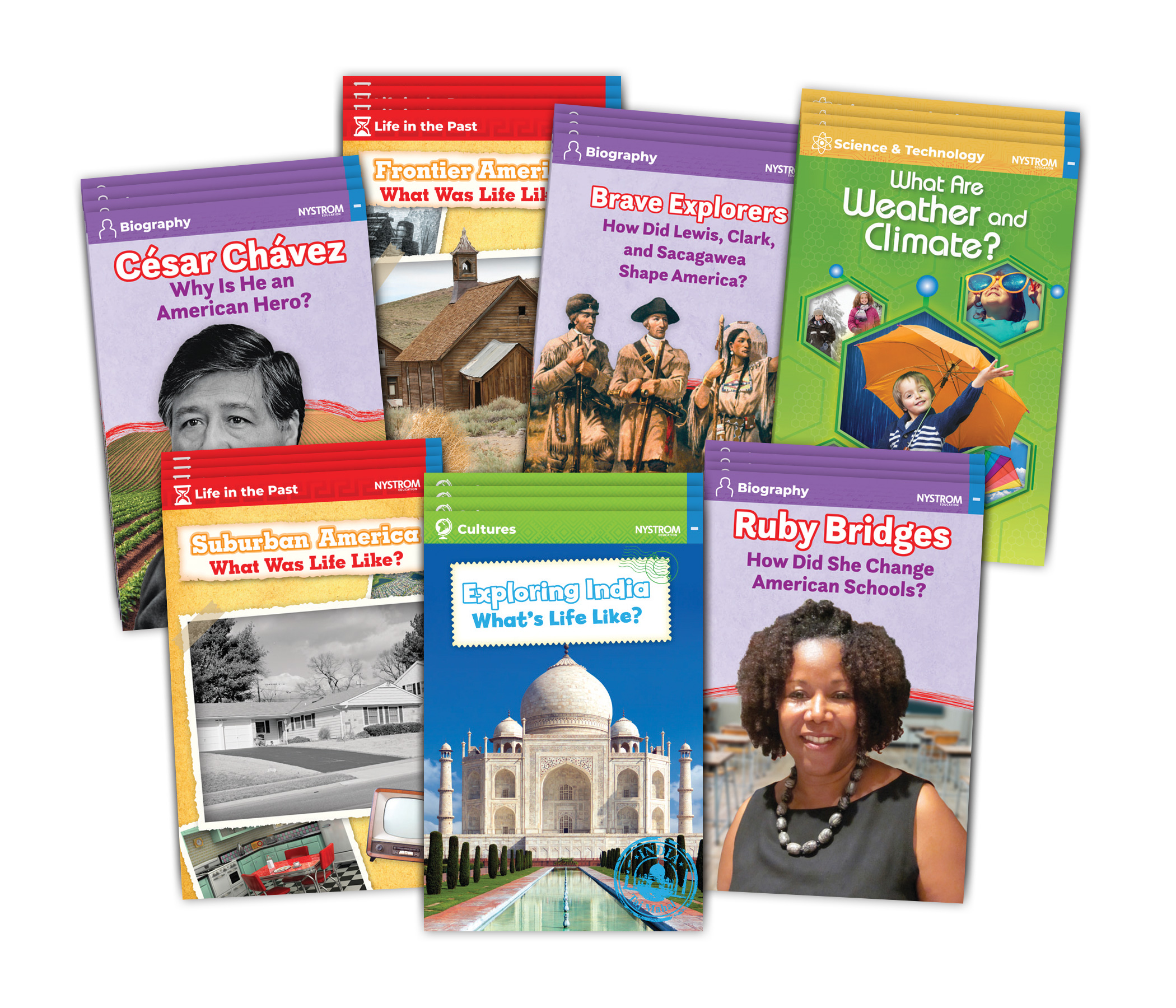
Grade 1
Four levels of social studies readers for each title:
- Ruby Bridges: How Did She Change American Schools?
- Exploring India: What's Life Like?
- Suburban America: What Was Life Like?
- What Are Weather and Climate?
- Brave Explorers: How Did Lewis, Clark, and Sacagawea Shape America?
- Frontier America: What Was Life Like?
- Cesar Chavez: Why Is He an American Hero?
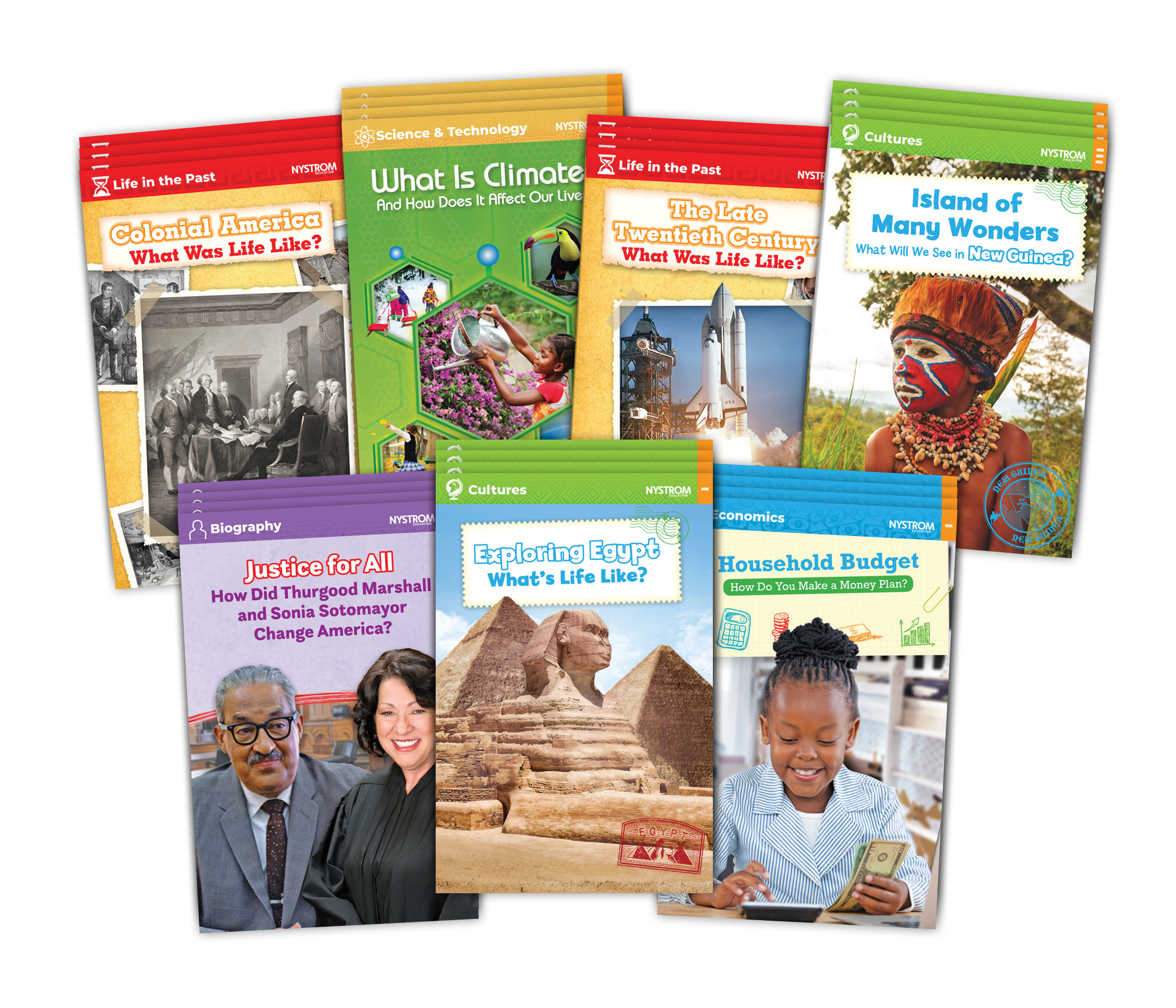
Grade 2
Four levels of social studies readers for every title:
- Justice for All: How Did Thurgood Marshall and Sonia Sotomayor Change America?
- Exploring Egypt: What's Life Like?
- Household Budget: How Do You Make a Money Plan?
- Island of Many Wonders: What Will We See in New Guinea?
- The Late Twentieth Century: What Was Life Like?
- What Is Climate? And How Does It Affect Our Lives?
- Colonial America: What Was Life Like?
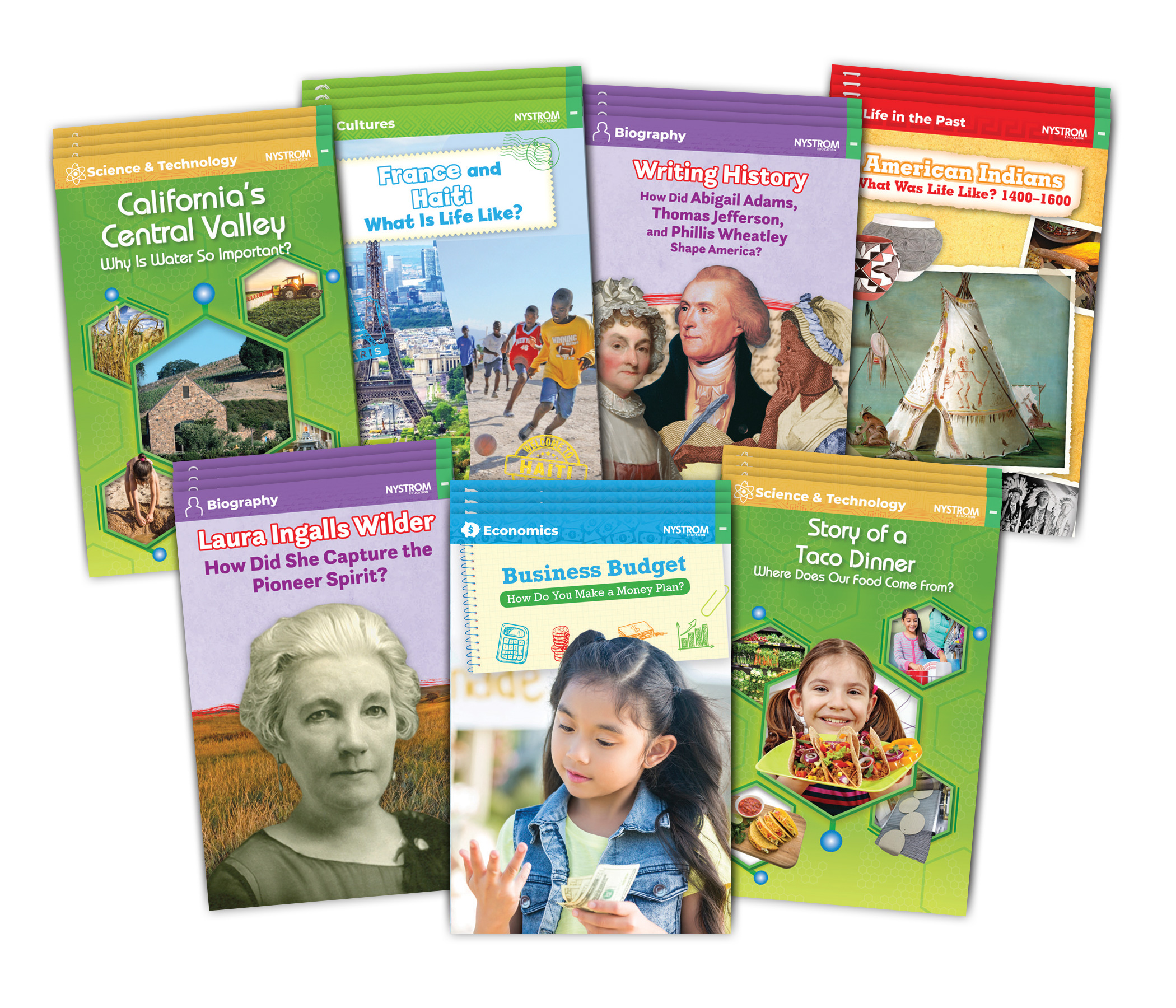
Grade 3
Four levels of social studies readers for each title:
- Laura Ingalls Wilder: How Did She Capture the Pioneer Spirit?
- Business Budget: How Do You Make a Money Plan?
- Story of a Taco Dinner: Where Does Our Food Come From?
- American Indians: What Was Life Like?
- Writing History: How Did Abigail Adams, Thomas Jefferson, and Phillis Wheatley Shape America?
- France and Haiti: What Was Life Like?
- California's Central Valley: Why is Water So Important?
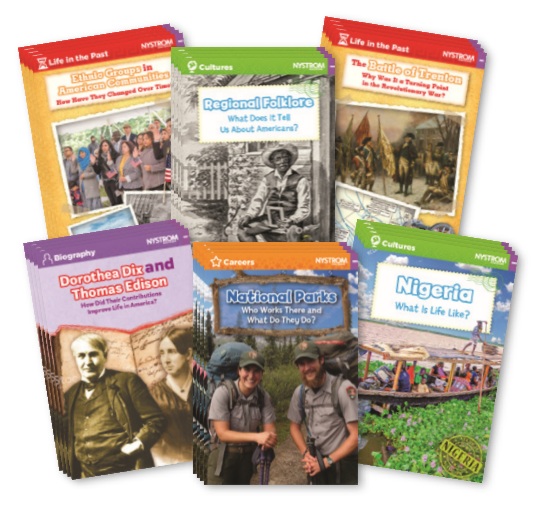
Grade 4
Four levels of social studies readers for each title:
- Ethnic Groups in American Communities: How Have They Changed Over Time?
- Regional Folklore: What Does It Tell Us About Americans?
- The Battle of Trenton: Why Was It a Turning Point in the Revolutionary War?
- Dorothea Dix and Thomas Edison: How Did Their Contributions Improve Life in America?
- National Parks: Who Works There and What Do They Do?
- Nigeria: What is Life Like?

Grade 5
Four levels of United States history readers for each title:
- Inventors and Their Inventions: How Did They Help America Grow?
- Folktales of the Frontier: What Captured the American Imagination?
- The Civil War: How Did Everyday People Take Action?
- The Triangular Trade: What Did Enslaved Africans Experience?
- The 1940s: How Did World War II Change Life in America?
- Constitution Writers: How Did They Form a More Perfect Union?
- The Pilgrims and Wampanoag: What Was Life Like for These Early Americans?
- Ancestral Pueblo People: What Was Life Like?
Learn more about the Social Studies Library
Contact Your Oklahoma Curriculum Specialist
